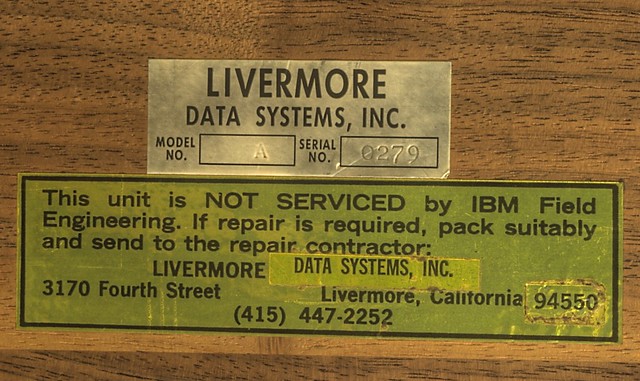So, as I am writing this, the FAA's Air Traffic Control system is down. More specifically, it has been reported that the computer systems responsible for automated processing of flight plans is down. As such, Air Traffic Controllers are having to enter flight plans one at a time manually for each flight before departure. This is having predictably catastrophic effects on the flow of traffic out of busy airports like ATL.
Interestingly, four months ago a presenter at
DEFCON 17 named Righter Kunkel gave a presentation on how antiquated and potentially insecure the FAA's system - specifically the system for processing flight plans - was. He pointed out that anyone with very little information could easily flood the system with thousands of bogus flight plans and cause chaos.
That talk was published on the web, publicly, a few days ago.
So, is this what happened? Naturally, we'll probably never know. It might be that, it might be an unrelated failure, it might be that the system finally went over capacity and someone responsible for monitoring it was asleep at the switch. The truth of the matter is this, many of the systems in place are outdated and needed to be updated. And this outage will definitely put a huge spotlight on that fact in the public media.
This is where I get concerned. Sure, maybe it was past time to turn the light on in that closet and see all the roaches scatter. But my concern is centered around a long-running fight in the aviation community about FAA funding. There is a group pushing for "
user fees" for FAA services, and
lately they've gained some traction.
The traditional model for funding the FAA and its associated services was through public funding taxes, taxes on things like aviation fuel, and surcharges levied on commercial aviation tickets. This model has worked in the past, and spreads the cost of aviation services out amongst the public. In a debate about whether to privatize the Air Traffic Control system, President Clinton referred to ATC as being "inherently governmental." Why? Because
safety should be the only bottom line when it comes to services like Air Traffic Control.
So what does that have to do with the funding debate? Bear with me for a second.
In the user fee model, there will be a fee for Air Traffic Control services. This means, as a pilot, that I'm likely going to be faced with the following:
- Get an FAA weather briefing: FEE
- File a flight plan: FEE
- Get VFR "Flight Following" radar service: FEE
- File a "pop-up" IFR flight plan enroute: FEE
What's the problem with this? Many of these actions are
voluntary for flying. As a pilot, I get to decide when to get an FAA weather briefing. I also get to decide
whether to fly IFR, and whether to file a flight plan, and
whether to get radar service in congested areas. Today, the only factor influencing that decision is safety. I get flight following from ATC when safety dictates that it would be prudent. I file flight plans when safety dictates that doing so would be prudent. I contact ATC for services anytime safety dictates that I should do so. That's my only decision criteria.
With user fees, I'll also have to consider the
cost of these decisions. In "marginal" cases, I will be
financially incented to make the less safe decision because it will save me money. I'm not saying that I personally will do things that are unsafe, I'm saying that the pilot population as a whole will be affected. Their decision making process will be skewed by the possibility of having to pay for services that keep everyone safer.
It's not just my safety that puts in jeopardy. It's everyone's. Are you, as someone who flies in our nation's airspace system (either as a pilot, passenger, or customer of the airlines) okay with that?
If not, please
write to your government representatives,
especially now, and
tell them that. Tell them you want the FAA Funding Re-authorization bill to exclude user fees and keep safety as the only criteria for making ATC decisions in our nation's airspace system. And support
AOPA's advocacy program keeping general aviation safe and affordable for everyone.
The proponents of user fees are going to use today's failure to trumpet their cause. I agree that the system should be modernized, but I don't think lack of charging user fees to the pilot population is what was keeping it back. Don't let our government compromise your safety under the guise of improving something they're responsible for anyway.
- K.C.

